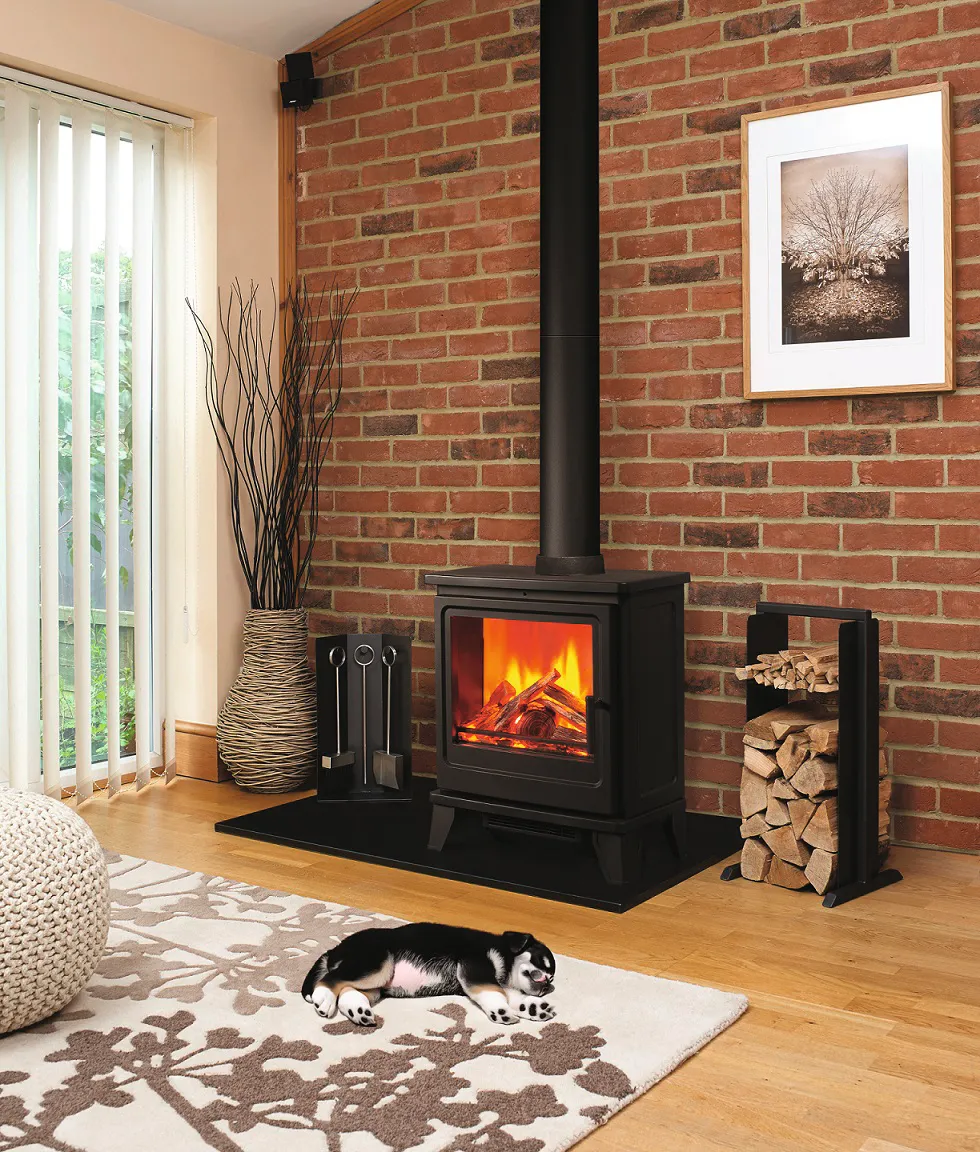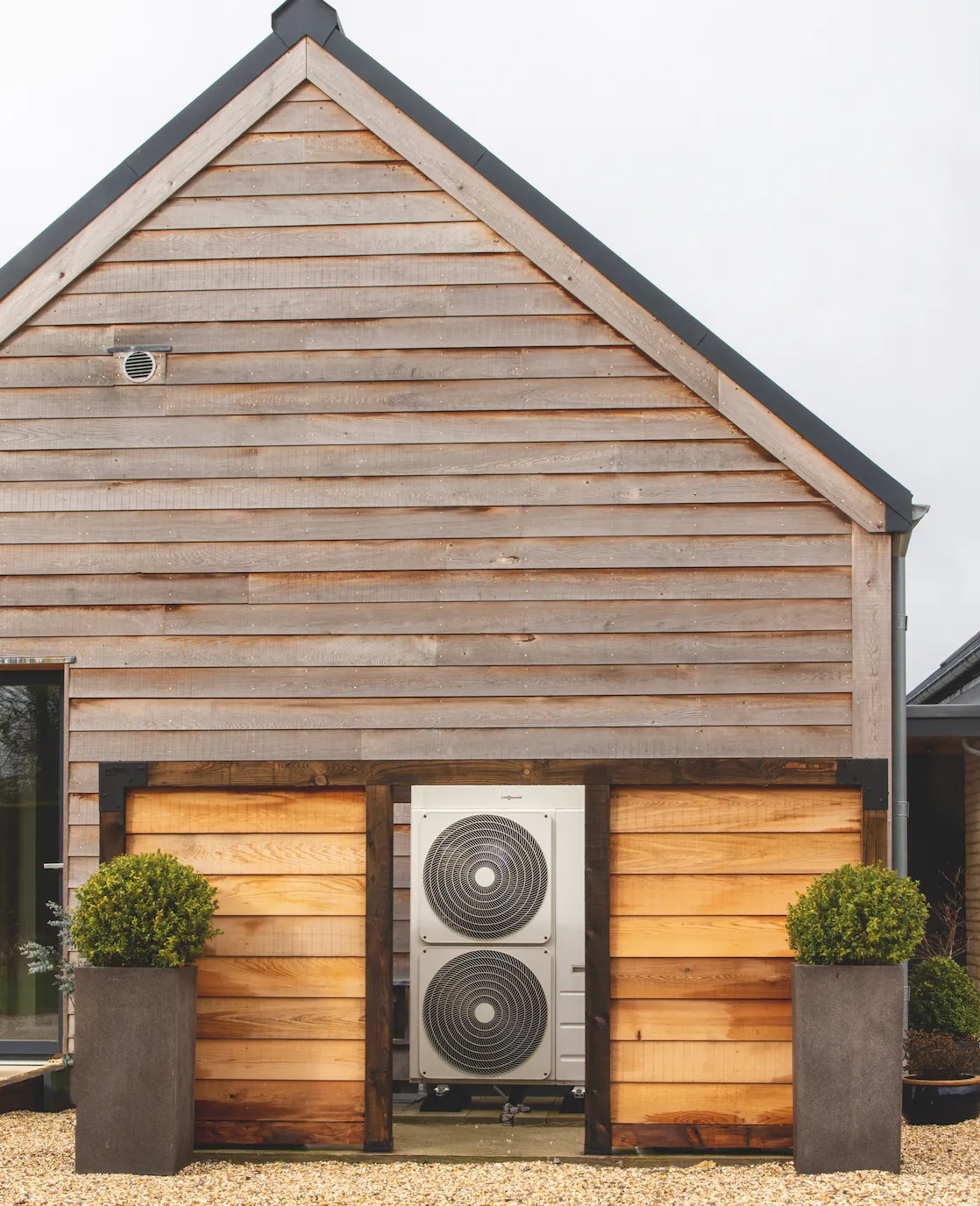Last winter’s sky-high fuel bills were a wake-up call for many of us, and with central heating and hot water accounting for over half the average home’s energy use, making it more efficient and cheaper to run has become a top priority. Replacing the boiler is far from the only option – upgrading individual radiators and other heaters and improving insulation can make a substantial difference, too.
From room-by-room solutions to installing the latest renewable systems, here’s how to adopt the best possible heating plan.
Eight ways to heat your home more efficiently
Switch to electric radiators
Over 90% of British households have gas boilers with radiators. These radiators are filled with water heated by the boiler and travels through the pipework to each room, losing energy as it does so – an issue that’s more prevalent in larger properties. If you’ve noticed that your gas boiler is struggling to heat your home uniformly, then electric radiators could be the answer.
Although the unit cost of electricity is higher, these radiators are far more efficient than their gas counterparts. All their energy is converted into heat, with very little wastage, meaning they reach the required temperature much more quickly and retain warmth for longer. Electric radiators can be used to heat single rooms without needing to fire up the boiler and, once installed, they’re maintenance-free.
Adopt smart technology
Smart home controls are a great way to make your home more energy efficient, allowing you to switch the heating on and off and regulate the temperature in different rooms or zones. They’re operated via an app on your phone or device, so you can control your heating from anywhere, and some will helpfully alert you if windows are left open when you’re out, or if the temperature drops below a certain level.
Components include wired or wireless smart room thermostats, radiator valves, and a smart hub to connect the heating system to the internet. Smart electric radiators are also available. Smart technology can be used alongside standard boilers, underfloor heating and heat pumps, but be sure to check the compatibility of your system before buying.
Invest in a wood-burner

A wood-burning stove or multi-fuel burner will make your home feel cosy and welcoming and, if you have a ready supply of fuel, can be a remarkably cheap way of heating a room on chilly days. If you don’t, pellets made from compressed wood or smokeless fuels – used in smoke-control areas – are widely available alternatives. Reassuringly, new stoves must comply with Ecodesign regulations relating to minimum efficiency and emissions requirements. Depending on what you’re burning, they are at least twice as efficient as open, log-burning fires.
In terms of cost, a wood burner will set you back around £2,000 on average – more if there’s no chimney and you have to vent it through an external wall – but could cut your heating bills by up to 10%, according to the Energy Saving Trust.
Purchase a portable heater
For chilly days when you don’t want to wait for the central heating to kick in, or switch it on for the benefit of a single room, it’s worth investing in a portable electric heater. As electricity is more expensive than gas, the key is to use it sparingly on as low a setting as possible.
Heaters start at under £25, though you’ll pay more for features such as programmable timers and multiple temperature settings. According to Which? an average 2kw model costs 55p an hour to run. Fan heaters make the mercury rise fastest and blow heat around the room, though they are often noisy, whereas convector heaters warm up the air as it passes through and heat the space more evenly. Look out, too, for oil-fill radiators that retain warmth for longer.
Install a heat pump

Government plans to phase out gas boilers mean that increasing numbers of us will be replacing them with efficient, low carbon heating – in many cases, heat pumps. The main barrier is the price, but this is partly mitigated by a £7,500 government grant under the Boiler Upgrade Scheme, plus they use far less energy and cost less to run than traditional boilers. Ground-source heat pumps require trenches or boreholes to be dug, so are more suitable for new-build houses or ones undergoing extensive renovation, whereas air-source heat pumps are relatively easy to retrofit. Costing on average around £14,000, they sit on an exterior wall and transform natural heat from the air into clean energy, which heats the rooms via radiators or underfloor systems.
'Heat pumps work at lower temperatures than conventional boilers and heat a room to a lower temperature as well,' says Nick Duggan, managing director at The Radiator Centre. 'Traditional radiators are designed for higher-temperature systems and therefore, may not work as effectively with a heat pump, leading to reduced heating efficiency. To compensate, you will either need larger radiators than you currently have, or more energy-efficient ones. Radiators with more surface area are best, as they transfer heat more effectively into the surrounding space.'
Opt for underfloor heating
Suitable for virtually all floors, underfloor heating frees up wall space and distributes warmth evenly throughout the room. There are two types – electric and water – and both are best fitted as part of a room makeover or whole house renovation to minimise disruption.
Electric underfloor heating comprises cables that are connected to a power supply and thermostat, and are either loose – suitable for a small area such as a bathroom – or evenly spaced on a mat.
A water system consists of leak-proof pipes that circulate water to heat the room. It’s up to 25% more efficient than a standard radiator, cheaper to run than electric underfloor heating, and some products can be laid over existing floors and installed by a competent DIYer in a weekend.
Add an electric stove
Just like a wood burner or log fire, an electric fireplace creates an inviting focal point. The latest designs closely resemble the real thing, featuring flickering flames above a bed of wood, and are very versatile as they don’t require a working chimney or outside vent – just a socket where they can be plugged in.
Most have two temperature settings plus a flame-only option that doesn’t generate heat – choose from a free-standing fire or stove that can be placed anywhere, an inset design recessed into a fireplace or cavity, or a flat-fronted, wall-mounted model for a tight space, after checking that the heat output is right for the room size.
Although electricity is pricier than gas, these fires are highly energy efficient with no heat loss, and they don’t emit any polluting fumes.
Ensure your gas boiler is running efficiently
By looking after your boiler you’ll be able to extend its lifespan and maximise energy efficiency, so have it serviced annually by a Gas Safe registered engineer. It’s also important to bleed radiators to free trapped air that prevents the heat from circulating. You’ll probably only need to do this once a year, though if you detect cold spots in your radiators or they’re making rumbling sounds, try bleeding them again before calling the engineer. Water leaks, a yellow or orange pilot light, and substantial changes in pressure also require attention.
Another top tip is to reduce the flow setting on a combination boiler (without a water tank) to 60°C, which will still keep you toasty but can save as much as £60 over the year.
Looking to shave even more money off your gas and electric spend? Check out our top tips for reducing your energy bills. Or find out more about alternatives to central heating in our guide to home heating systems.